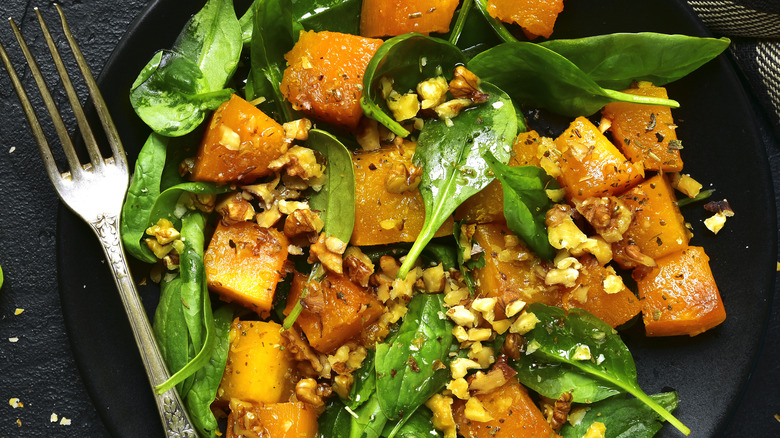Instead Of Roasting Squash With Brown Sugar, Try Sauteeing It
There's nothing that quite encapsulates the taste of fall like roasted squash. The sweet, earthy taste of acorn or butternut squash, caramelized by the oven and a bit of brown sugar, is a classic recipe. As beloved as roasted butternut squash is, there are a multitude of different ways to enjoy the winter fruit.
Sauteing squash is a quick and delicious way to enjoy its buttery, nutty flavor, simply sweetened with melted brown sugar. While roasting it yields a crispy exterior with a soft, creamy center, sauteing squash provides a different texture. Heating it in a skillet gives it a delicate, tender feel that's reminiscent of candied yams.
It's also a more time-efficient option for preparing squash. Roasting it can take up to 35 minutes, while sauteed cubes of squash are ready to serve within 15 minutes. With some olive oil, salt, nutmeg, cinnamon, and brown sugar, you can make sauteed winter squash that tastes incredible as a side dish to roasted lemon chicken, mixed into salads, or on its own.
Follow these tips when sauteeing squash with brown sugar
When roasting squash in the oven, it's easy to sprinkle all your ingredients onto the cubes of squash and not touch them again until they're done. With sauteeing, you can't add all your ingredients in at once. When brown sugar is melted in a pan, it takes on a deeper color and taste in the caramelization process.
However, that deep, rich flavor can quickly turn into black, burnt sugar, meaning you have to hold off on sprinkling it in until later on in the cooking process. About halfway through sauteing the squash, pour in brown sugar to taste. The more it melts, the richer the sugar will become, coating the squash in a decadent caramel flavor.
To help the squash cook through and remain soft and tender, add a small amount of water to slightly steam it. The time to do this is after it's been sauteed at a high heat and has a slightly crisp exterior, at which point, pour in some water and cover the skillet to finish the cooking process.

